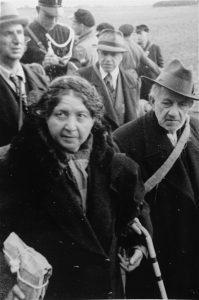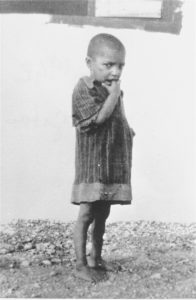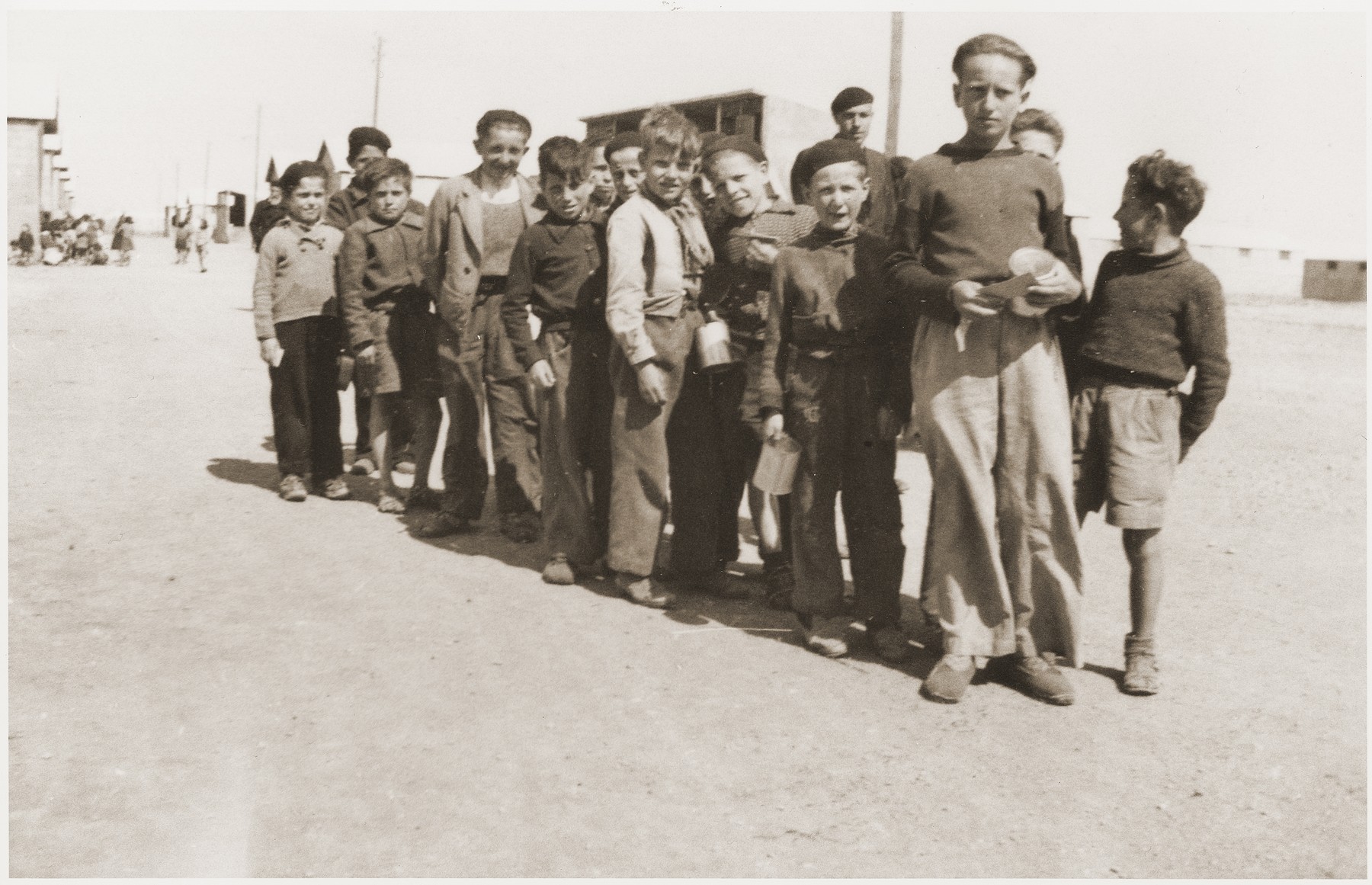Part 3B: Transit Camps

An elderly Jewish couple on their way from Hooghalen to the Westerbork transit camp in Holland. A member of the Dutch constabulary stands behind them, October 1942. Photo credit: USHMM #77659
Millions of non-Aryans were forcibly displaced through transit camps as part of Nazi Germany’s extensive program of population control and mass murder. The Nazis used transit camps as holding pens and transportation hubs near major railway lines. These camps played a particularly prominent role in killing the Jewish population. In Eastern Europe, Jews were largely forced into ghettos prior to their deportation, but in Central and Western Europe, transit camps were used to transport Jews long distances to extermination camps.

A Romani child interned in the Rivesaltes transit camp in France. The original caption reads, “A Gypsy child who loves to dance on tables,” 1941-1942. Photo credit: USHMM #17729
One of the largest transit camps was in Westerbork, Holland, where approximately 100,000 Jewish people were processed between 1942 and 1944. The majority of prisoners in Westerbork were transported to the extermination camps of Auschwitz-Birkenau or Sobibor in Nazi-occupied Poland. Other major transit camps included Drancy (France), Theresienstadt (Czech Republic), Salonika (Greece), and Fossoli (Italy).
Transit camps were also used to expel other groups of people, particularly in Eastern Europe. Hundreds of thousands of Poles, Ukrainians, and other groups underwent a screening process, where anyone deemed physically fit was transported—against their will—to forced labor sites. Prisoners were also examined for their “racial characteristics.” Children who had ideal Aryan features, such as blonde hair, blue eyes, and fair skin, were abducted from their families and sent to “Germanization” camps.
